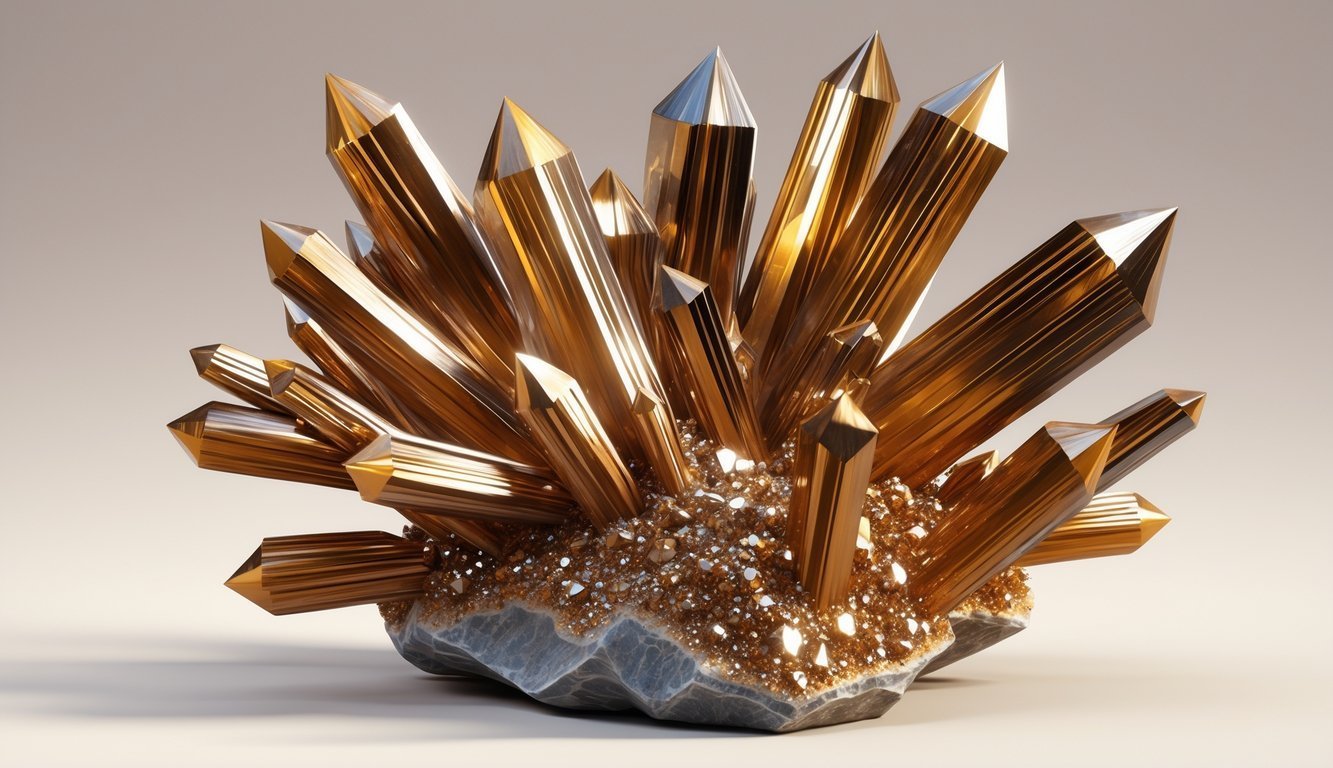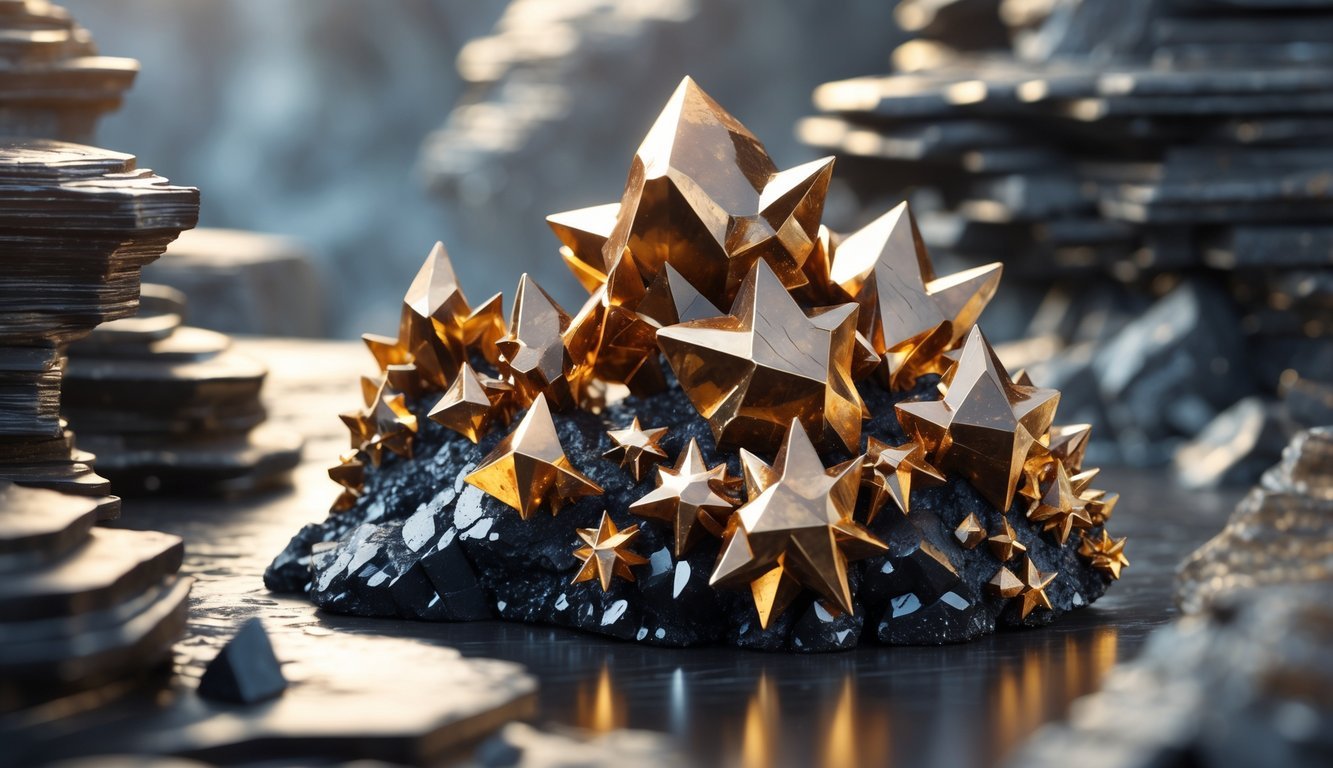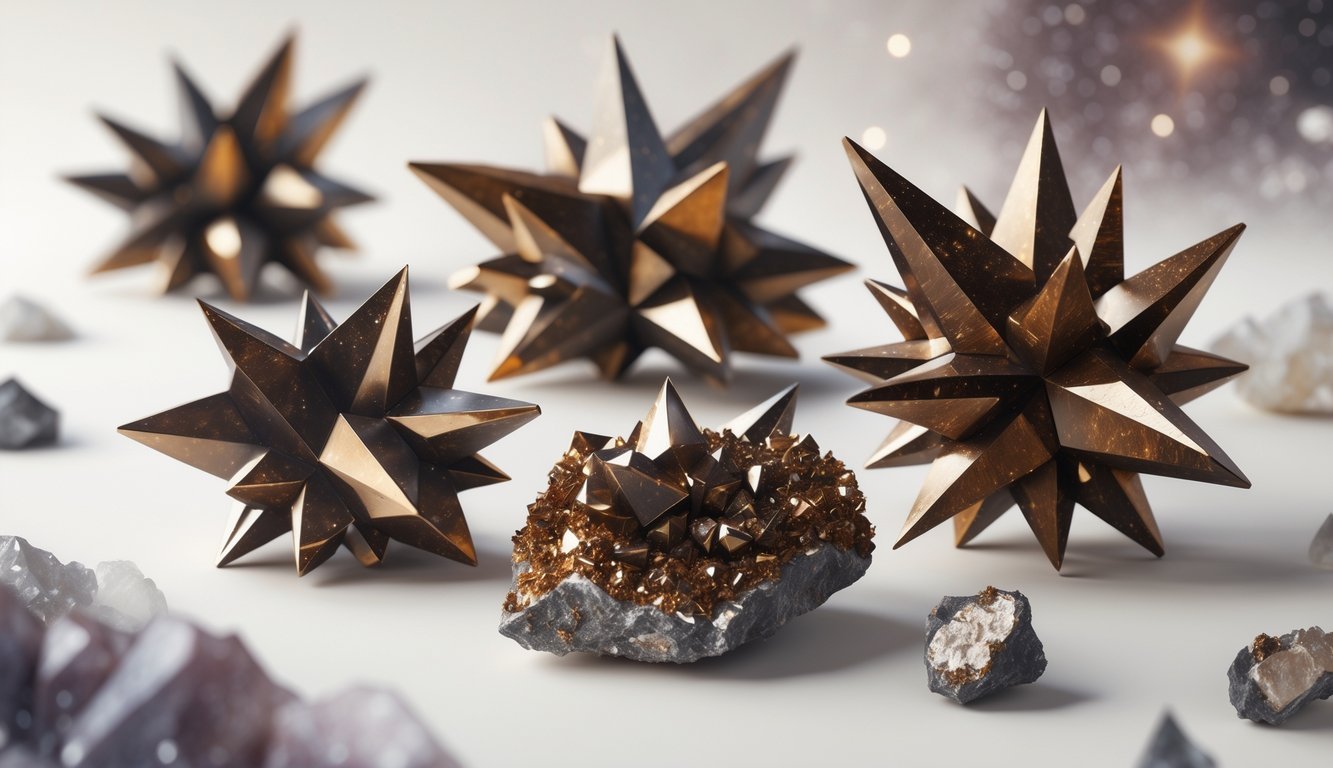PsychNewsDaily Publishers
100 Summit Drive
Burlington, MA, 01803
Telephone: (320) 349-2484
PsychNewsDaily Publishers
100 Summit Drive
Burlington, MA, 01803
Telephone: (320) 349-2484
Astrophyllite is a rare mineral characterized by star-shaped crystals in golden-brown hues, valued for its aesthetic appeal and metaphysical properties, including balance and self-awareness.

Astrophyllite is a rare mineral that shows off star-like crystal patterns in shimmery browns and golds. You’ll probably find it fascinating—not just for its looks, but for the quirky properties that make collectors and crystal fans seek it out.
This mineral forms with potassium, iron, and titanium, which gives it that striking appearance and a special spot among rare stones.
So, why do people talk about astrophyllite beyond its looks? Folks value it for more than just the glow—it’s thought to help with balance and self-awareness by revealing parts of your personality you might not always notice.
Whether you collect minerals or just like crystals, astrophyllite stands out for its natural beauty and the meanings people attach to it.

Astrophyllite stands out as a rare and striking mineral with some pretty cool physical traits and a backstory that’s worth a glance.
It forms in igneous rocks and contains a blend of elements like iron and titanium. You’ll spot it in colors like golden, brown, or green, often with those unmistakable star-like crystal patterns.
Astrophyllite usually shows off a metallic shine and star-shaped blades, making it easy to recognize in its raw state.
Because it’s soft and ranks low on the hardness scale, you’ll want to handle it gently—especially if you wear it as a pendant or other jewelry.
Its colors range from brown and yellow to green, and you might notice golden or bronze highlights. Titanium and iron in the mix cause these colors.
The crystals look like little leaves or starbursts, which is fitting since its name comes from Greek for “star leaf.”
You should keep in mind, astrophyllite is brittle and can break if you drop it. It doesn’t need fancy care, but being gentle helps it last.
Astrophyllite grows mostly in igneous rocks, so it comes from molten lava that cools and hardens over time. That slow process lets its unique shapes and patterns develop.
You’ll find astrophyllite in a handful of places worldwide, but it’s still rare. Notable spots include Russia’s Kola Peninsula, Greenland, Norway, Quebec in Canada, parts of Colorado in the USA, Mali, and Laven Island.
Each location puts its own twist on the crystal’s color and shape, thanks to local geology.
You might see astrophyllite hanging out with other rare minerals like arfvedsonite, kupletskite, and aegirine, forming some pretty wild mineral clusters in nature.
Astrophyllite belongs to the titanium silicate group, which falls under the broader silicates umbrella. Its chemical formula features potassium, iron, titanium, and silicon, all coming together in complex crystals.
Titanium and iron give it those deep golden and brown tones.
Sometimes, little impurities or extra elements tweak its color or shape. Because of the metals, astrophyllite has a slight metallic luster that makes it pop.
It’s part of the mica family, so its crystals often stack in thin, layered, leaf-like forms.
Paul Christian Weibye, a Norwegian mineralogist, named astrophyllite in the 19th century. The name comes from ancient Greek: astro for “star” and phyllon for “leaf,” which totally fits the star-leaf look of its crystals.
People first noticed the mineral for its unique appearance. Jewelers and collectors started using it in pendants and other jewelry, drawn to those golden and brown flashes.
Astrophyllite isn’t widely known outside mineral circles, but it’s still prized for its beauty and the symbolism of change and growth.

Astrophyllite carries an energy that nudges you toward spiritual growth and emotional healing. It works on your awareness and motivation, helping you keep your balance as you go through changes.
Its link to chakras offers support for your soul’s journey toward clarity and calm.
Astrophyllite invites you to open your mind and embrace growth. It boosts confidence and insight, letting you see past your limits and the obstacles in your way.
People turn to it for transformation, making it a little easier to accept change.
You might notice it guiding your spiritual path, helping you connect with the universe’s energy. This stone is said to encourage enlightenment and clairvoyance, giving you a deeper sense of self and purpose.
A lot of folks use it for spiritual protection and to align with higher truths.
Astrophyllite affects several chakras, mainly the root, sacral, and crown chakras.
By working with these chakras, astrophyllite helps your energy flow and supports a more balanced mood.
Astrophyllite can ease stress and anxiety, and it helps with feelings like anger or sadness. It encourages calm when you’re dealing with emotional challenges, like PMS or menopause.
Many people say it lifts their confidence and brings clarity, making it a little easier to handle tough emotions.
This crystal supports emotional healing by helping you accept yourself. It clears out negative feelings and brings in positive energy.
If you struggle with addictions or emotional blocks, astrophyllite’s energy can offer some strength and support.
You can use astrophyllite in lots of ways for healing or spiritual growth. During meditation, holding it or keeping it nearby can help you focus and find calm.
Some people place astrophyllite on chakra points—especially the root, sacral, or crown—to balance energy.
Carrying it daily might give you a boost of motivation or emotional support on rough days.
Astrophyllite’s energy is said to support organs like the kidneys, liver, pancreas, and spleen. It’s also thought to help clear toxins and support reproductive and hormonal health.
Using it regularly could help you feel more connected in body, mind, and soul.

Here are some quick answers about astrophyllite’s qualities, how to spot the real thing, ways to use it, and what makes it different from similar stones.
Astrophyllite is said to help with clarity and self-awareness. Many believe it supports emotional healing and encourages positive energy.
People use it to feel more balanced and grounded during stressful times.
Real astrophyllite shows a unique star-like pattern in its crystals. Imitations usually miss those sharp, radiating shapes.
You can also check the weight and texture—real stones feel denser and smoother than fakes.
Astrophyllite usually appears in golden to brown shades with metallic, star-like crystal formations.
The crystals look like thin, blade-like shapes that catch the light from different angles.
You can use astrophyllite in meditation or as a decorative piece to bring calm to your space.
It’s believed to boost focus and help you let go of negative thoughts.
Astrophyllite tends to be golden or brown with a shiny, starry pattern. Arfvedsonite, in contrast, is darker—usually black or dark blue—with long, needle-like crystals.
They differ in their healing focus too; astrophyllite is linked to emotional balance, while arfvedsonite is more about stress relief.
You’ll usually find small to medium-sized pieces priced anywhere from $20 to $100.
If you’re eyeing something bigger or a stone with exceptional quality, sellers might ask for a higher price.